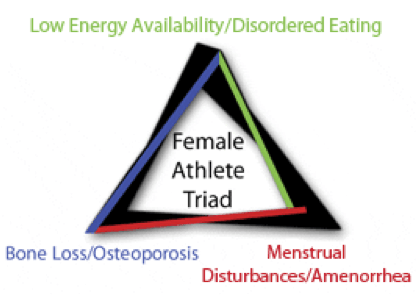Last week we started off our resolution series and focused on our patient care goals. This week, we’re building off those goals with our next two resolutions for our next 10 years! The theme of our next two resolutions is growing our relationships with other local professionals to provide you the best care possible!
3. Grow our relationships with referring and community physicians to provide truly collaborative care for our patients
We’ve talked in previous posts about something called direct access. This means that you can come to see us without a referral from your doctor (depending on your insurance of course). Despite this open door, we work very closely with local doctors to manage your care. Growing strong and trusting relationships allows us to provide you faster and higher quality care because of the information that can flow freely between your providers. We also love to share the benefits of physical therapy with our doctors so they can help us identify what patients would be best suited for physical therapy services!
4. Grow our relationships with local alternative health, wellness, and nutrition care professionals to maximize our patients’ overall quality of health and life
Our goal as Physical Therapists is to help you live better and healthier. We specialize in the movement and postural component of living better and healthier. We realize that there’s other alternative professionals that can help us with this including massage therapists, acupuncturists, personal trainers and fitness instructors, yoga teachers, sports coaches, etc. We also have knowledge about nutrition, but certainly not to the extent of a Dietician. We want to be able to help you and guide you to other professionals that can help you live better through movement and nutrition. We are devoted to surrounding ourselves with the best of the other alternative specialties to be able to provide you, or refer you to the best care for you! Together, we will be most effective at improving your quality of life!
– Corvallis and Albany Sport and Spine Team
Photos courtesy of:
https://www.dom.umn.edu/education/minnesota-primary-care-transformation-collaborative/index.htm
https://www.elephantjournal.com/2012/01/wellness-that-worx-american-alternative-health-care-ingenuity/
New Year Resolutions 1-2 for our next 10 Years of Business – Part 1
Here at Corvallis and Albany Sport and Spine Physical Therapy our mission is to “strive to empower patients to achieve greatness, improving lives and building relationships for life.”
January 2015 marks our ten year anniversary helping you work, live, and play again! In January 2005, Laura and Carrol turned their dream for improving human movement into our clinic, which has since grown into two locations! Craig joined the ownership, heading up our Albany location which opened in Fall 2013. We have had a successful first 10 years of living out our mission, but we always want to be better. As the new year is here, we want to publicly re-focus our goals for our next 10 years of movement health care service and beyond!
Starting with our first two resolutions, over the next 10 years we resolve to:
1. Provide every patient with the best Physical Therapy care in the Willamette Valley
When you have musculoskeletal pain or discomfort, we want to be the place that everyone wants to come in order to work, live, and play again, better and without pain. Our Physical Therapists’ (PT) and Physical Therapy Assistants’ (PTA) number one goal is to give you the best care available. Our second resolution below states how we do that for each individual. Stay tuned for our last two resolutions on how we plan to grow our skills to provide even better care in the days, months, and years to come.
2. Compassionately care for every patient like they’re our only patient
We truly believe that quality Physical Therapy involves one on one care with a PT or PTA. At our clinics, we want you to feel like you’re our only patient and like you’re part of our family. We treat you like a family member. Rather than giving you some exercises for “knee pain”, we actually invest in treating you as an individual. We take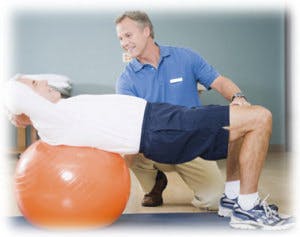 the time and care to find out where you’re having pain/discomfort, and then we strategically and specifically guide you through individualized movement and tests to find out why you’re having your pain!
the time and care to find out where you’re having pain/discomfort, and then we strategically and specifically guide you through individualized movement and tests to find out why you’re having your pain!
We then give you appropriate manual therapy techniques and exercises specific to how you move with the goal to help you move better with the proper range of motion and muscles working. We don’t just treat you to get rid of your pain, but we learn what you enjoy to and need to do during your day; we then make sure you move well enough to do those tasks without pain and with decreased risk to develop future pain! Our goal is to individually teach you how to move better for life so you can always work, live, and play as best as you can and as long as you can without pain!
– Corvallis and Albany Sport and Spine Team
Photos Courtesy of:
https://openi.nlm.nih.gov/detailedresult.php?img=3445125_10.1177_1941738109338553-fig3&req=4
https://theptgroup.com/workers-compensation/
Recommendations for Exercise Beginners
It’s almost the New Year and you know what that means – time for resolutions! If you are making a resolution to start exercising this year, we have some information and tips to get you started.
 First off, you’ve heard it all before but let’s take a minute to recall the benefits of exercise! You can see decreased markers and risk factors for heart disease, lower blood pressure and cholesterol, improved weight loss/management, preservation of bone mass, decreased risk of falls, improvement of depressive and anxiety disorders, and even improve cognitive function. Regular exercise can also enhance your overall quality of life. Are you sold yet?
First off, you’ve heard it all before but let’s take a minute to recall the benefits of exercise! You can see decreased markers and risk factors for heart disease, lower blood pressure and cholesterol, improved weight loss/management, preservation of bone mass, decreased risk of falls, improvement of depressive and anxiety disorders, and even improve cognitive function. Regular exercise can also enhance your overall quality of life. Are you sold yet?
Sometimes, getting started is the hardest part. Using a pedometer or activity tracker can be a helpful way to monitor what you are doing and how you are improving. They’re not perfect and don’t give you a lot of information on the quality of movement but give you a good comparison of one day to another. Check out these links –
https://www.fitbit.com, https://jawbone.com/up, https://www.nike.com/us/en_us/c/nikeplus-fuelband
Once you’ve gotten moving, the American College of Sports Medicine (ACSM) has some general exercise guidelines (please consult your doctor or PT if you have an injury or health condition that may limit your ability to exercise):
- At least 30 minutes of moderate intensity cardio exercise at least 5 days a week for a total of at least 150 minutes of exercise/week. You can substitute 20 minutes of vigorous exercise 3 days a week or 75 minutes/week if you want!
- The talk test – if you can have a short conversation while exercising you are at the right intensity. If you can’t, slow down a little. If you could sing a song, you’re not working hard enough!
- 2-3 days/week of strengthening exercises for major muscle groups. This includes balance, agility, and coordination drills.
- 2-4 sets of each exercise per muscle group (you can see improvement with just 1 set in beginners!)
- Rest 2-3 minutes in between exercises
- At least 2 days/week of flexibility (stretching) exercises of the major muscle groups

- Try to stretch after your cardio or strength work out (or as a stand alone work out)
Here are some things to keep in mind:
- Make sure you are breathing! Sometimes when you are lifting, you feel like holding your breath helps give you that last little bit of strength – and it does increase the pressure in your abdomen (supporting your back) but it also can dangerously change your blood pressure leading to dizziness, fainting, or even a stroke! So try this – inhale during the “rest” phase of your exercise and exhale during the “work” phase of your exercise.
- Hydrate! You should be drinking water (not soda or other sugary drinks) during the day to keep your body well hydrated throughout the day. After exercise, make sure you are drinking more water to replenish any fluids that are lost. If you’ve completed very strenuous, intense, or extended exercises, you may benefit from a drink with electrolyte replacement (try chocolate milk!).
- Set a goal! Write down your goals for exercise and make sure they are realistic. If you currently don’t exercise at all, don’t set a goal to exercise every day. Start small and once you achieve those goals, set new ones! Don’t get discouraged if you have a hard time, just keep working towards what you want!
- Pick exercises/activities you like! Working out doesn’t have to happen in the gym – it can be a walk with your family or dog, working in the garden or cleaning the house. Just get out there and move!
One of the biggest risks with any exercise is musculoskeletal injury – if you start to have any pain with exercise, call us for evaluation of your symptoms before your symptoms get worse!
-Erin Bell PT, DPT
Resources:
https://www.hsph.harvard.edu/nutritionsource/tips-for-getting-exercise-into-your-life/
https://journals.lww.com/acsm-msse/Fulltext/2011/07000/Quantity_and_Quality_of_Exercise_for_Developing.26.aspx
Workplace Wellness Pt. 2 – Desk Setup/Posture
Cold Weather Pain
Have you noticed that as the seasons change and the cold, rainy weather returns that your knee suddenly aches a little 
more? Or your wrist seems to always be the most painful right before a big storm? Well you’re not alone! Many people, most with chronic pain, do experience some change in their symptoms as the weather changes. Unfortunately, there is no clear answer exactly why this happens but researchers have come up with a few ideas.
The most popular theory deals with barometric or atmospheric pressure. This is the force that the atmosphere exerts on your body (and everything else on the planet) throughout the day. Normally, this force is fairly constant and that pressure can help keep joints from swelling or aching. When a storm is rolling in, the barometric pressure typically drops. This means that the daily pressure on your joints has decreased. Sometimes this allows the joint to swell and expand which can produce more pain and aching before the cold or rain even sets in.
Now you can’t change the atmospheric pressure but there are a few things you can try at home to alleviate those symptoms.
- Compression – try using an ace bandage or compression sleeve to put a little pressure back onto the joint to reduce swelling. Make sure you don’t cut off blood supply to your toes or fingers!
- Warm – make sure you dress appropriately for whatever conditions you will be going out in! Lots of layers will help keep the joint warm.
- Stay active – get those painful joints moving! It doesn’t have to be a lot or intense motion but getting stiff joints moving will help alleviate some of your symptoms.
 If you continue to have pain, come in for an evaluation – there may be something else going on that is causing your pain including muscle weakness, lack of flexibility, joint stiffness, or difficulty coordinating movements. While we can’t change the weather, we can address all those other components that may be causing you pain. Give us a call today!
If you continue to have pain, come in for an evaluation – there may be something else going on that is causing your pain including muscle weakness, lack of flexibility, joint stiffness, or difficulty coordinating movements. While we can’t change the weather, we can address all those other components that may be causing you pain. Give us a call today!
-Erin Bell PT, DPT
References:
https://www.outsideonline.com/fitness/bodywork/fitness-coach/Why-cold-damp-weather-makes-old-injuries-hurt.html
Pictures:
https://assisted-living-list.com/articles/effects-of-cold-weather-on-arthritis/
https://aim4healthblog.com/2013/11/14/how-do-i-deal-with-stiff-joints-in-the-winter-time/
Female Athlete Triad
Calling all female athletes or parents of active girls – listen up! We as physical therapists love when you are active, competitive, and driven to succeed but there is an under-recognized and under-reported phenomenon seen in active women that can cause serious health issues. I’m talking about the “Female Athlete Triad” – a combination of different but related conditions including disordered eating, amenorrhea (absent or irregular periods), and osteoporosis (decreased bone mass).
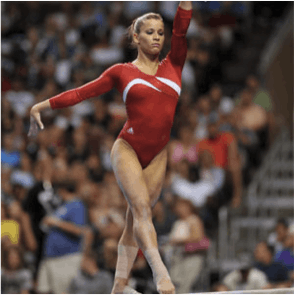 Look out for excessive or rapid weight loss, preoccupation with food or weight, mealtime rituals, avoiding team meals or secretive eating. Disordered eating combined with excessive physical activity can in turn cause amenorrhea and osteoporosis due to inadequate caloric intake.
Look out for excessive or rapid weight loss, preoccupation with food or weight, mealtime rituals, avoiding team meals or secretive eating. Disordered eating combined with excessive physical activity can in turn cause amenorrhea and osteoporosis due to inadequate caloric intake.
This triad is often seen in women who are highly driven and excel in their sport – which is often an individual sport or one based on appearance (gymnastics, figure skating, running, or even ballet). These athletes are often perfectionists and are looking for control in all aspects of their life.
Physical signs may include stress fractures, yellowing of the skin, soft baby hair on the skin, frequent sore throats, chipmunk-like cheeks, dental cavities or foul breath, fatigue, dizziness, and depression.
If you suspect someone you know may have disordered eating or exercising habits, strongly encourage them to seek medical treatment. They often require the help of a doctor, nutritionist, psychologist and the support of their family, friends, teammates, and coaches to recover.
-Erin Bell PT, DPT, Doctor of Physical Therapy
Resources for parents or loved ones:
Five Reasons to See Your Body Mechanic

As Physical Therapists, we consider ourselves the human body movement experts. Just as a car needs to move (that’s its purpose) so do we! And just like a car needs repairs, so do we! As Doctorate level professionals of human movement, Physical Therapists are here to be your body mechanics! Just like your family has a mechanic you take all of your cars to, we want to be your whole family’s body mechanic. We’re here to help you get back on to your road in life, moving well and without pain!
Here are 5 reasons to see your body mechanic:

- Persistent Pain
If you still have sharp, achy, or dull symptoms/pain after 3-5 days of rest, we can help you find out why and address your pain before it worsens - Trauma
If you have one traumatic event such as an ankle sprain or acute back pain, you need to find out how to manage and prevent further injury or compensation - Non-responsive to anti-inflammatories
If anti-inflammatory medications don’t control the pain, then you have a problem that is likely mechanical in nature and you need to fine-tune the pieces of your machine - Joint stiffness and/or swelling in muscles and/or joints
If you have visual changes such as swelling or bruising, you need find out why it is occurring and how to manage it to avoid joint stiffness or tissue scarringJoint stiffness with or without swelling is another reason to consult us. Joint stiffness causes pain, compensation, and additional torque on other joints which could lead to more problems or pain - Pain with New Activities
If you start an exercise program to improve your health and you begin to have pain, a physical therapist can help you find out why so you can prevent it from happening.We are also the experts to help you modify and tailor your new plan to fit your goals and your movement patterns to optimize your health and benefit from exercise.
Understanding our body as a biomechanical machine and doing regular maintenance with your Physical Therapist will improve how you move. Movement is the key to body freedom and will keep you working, living, and playing longer.
Remember, you can see your Physical Therapist without a physician referral and we’ll get you repaired and running on your road again!
Laura Hoffman, MSPT
Photos courtesy of:
The Benefits of Foam Rolling
Early Specialization in Sports – Good or Bad?
In our highly competitive and driven society, many kids are now participating in one sport all year long without a break and doing it at younger and younger ages. Some parents feel that if their child doesn’t specialize early on, they have no chance at excelling in the future and hopes of a scholarship will be lost. While some kids are passionate about one sport and do excel when training this way, there are many factors to consider that greatly affect the mental and physical health of our kids.
Five negative things that can be associated with early specialization:
- Single sport athletes account for >50% of overuse injuries
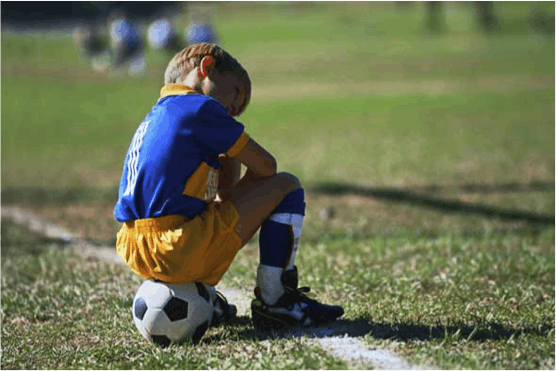
- These athletes are often inactive as adults as result of burning out as teens
- A study found that single sport athletes were 70 – 93% more likely to be injured than their multi-sport peers
- High risk of burnout due to the stress and pressure of playing a single sport
- Female single sport athletes may be at higher risk for knee pain and even ACL tears
How do you fight the negatives of specialization and keep your child healthy and happy?
- Before age 12 – 80% of their time should be spent in deliberate play and in sports other than their “chosen” sport
- Age 13-15 – 50% of time should be spent in “chosen” sport, 50% should be spent performing other athletic endeavors
- Age 16+ – Specialization is more appropriate for this age group but 20% of time should still be spent cross training in a different sport
 Every child is different but on the whole, kids need time spent playing and pursuing multiple different sports to enhance their learning and motor development. Often the stress and pressure associated with early specialization causes the athlete to drop the sport before a college scholarship or professional dreams can come to fruition. Make sure your child can still be a kid and encourage their passion and love of sports! Being active is a life long journey with the ultimate goal of health and happiness!
Every child is different but on the whole, kids need time spent playing and pursuing multiple different sports to enhance their learning and motor development. Often the stress and pressure associated with early specialization causes the athlete to drop the sport before a college scholarship or professional dreams can come to fruition. Make sure your child can still be a kid and encourage their passion and love of sports! Being active is a life long journey with the ultimate goal of health and happiness!
-Erin Bell PT, DPT
Reference:
Photos:
Why DPT?
The profession of physical therapy is ever evolving and changing. One of the biggest changes in the last 20 years has been the transition to the DPT or Doctorate of Physical Therapy degree. As of today, all Physical Therapy Schools are at a doctoral level (except for one). By the year 2020, a graduating Physical Therapist will not be eligible to take the boards and become a licensed Physical Therapist unless he or she has a DPT (those already licensed without a DPT will still be licensed and able to practice). This means that all graduates of those programs have extra training in differential diagnosis, pharmacology, radiology, and often more time spent out in various clinical rotations.
The education provided by DPT programs is intensive and comprehensive. Graduates come out ready to treat a wide range of patients – young, old, athletes, couch potatoes, parents, kids, and everyone in between. Between Corvallis and Albany Sport and Spine, there are 6 physical therapists with DPT after their names.
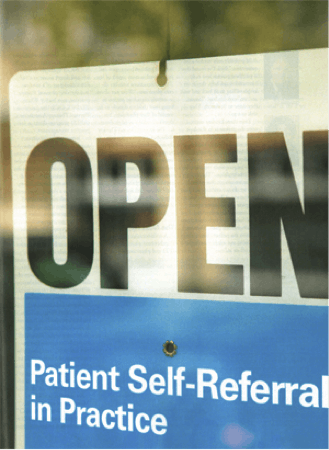 Doctors of Physical Therapy are educated and prepared to practice without the direct supervision of a doctor and have the training to know when it’s necessary to refer you to your primary care physician or a specialty physician. Check out one of our previous blog posts about direct access here – https://csspt.com/2014/06/13/direct-access-2/.
Doctors of Physical Therapy are educated and prepared to practice without the direct supervision of a doctor and have the training to know when it’s necessary to refer you to your primary care physician or a specialty physician. Check out one of our previous blog posts about direct access here – https://csspt.com/2014/06/13/direct-access-2/.
One of the owners of CSSPT just graduated with her transitional (tDPT) doctorate in August. Carrol worked hard over the past few years – not only running a business and family, but studying for tests, writing papers, and giving presentations. Carrol, or should we say “Dr. Esterhuizen”, has graduated with the most up to date information on physical therapy and what treatment is best for her patients. We are so proud of her – way to go Carrol!
-Erin Bell PT, DPT

